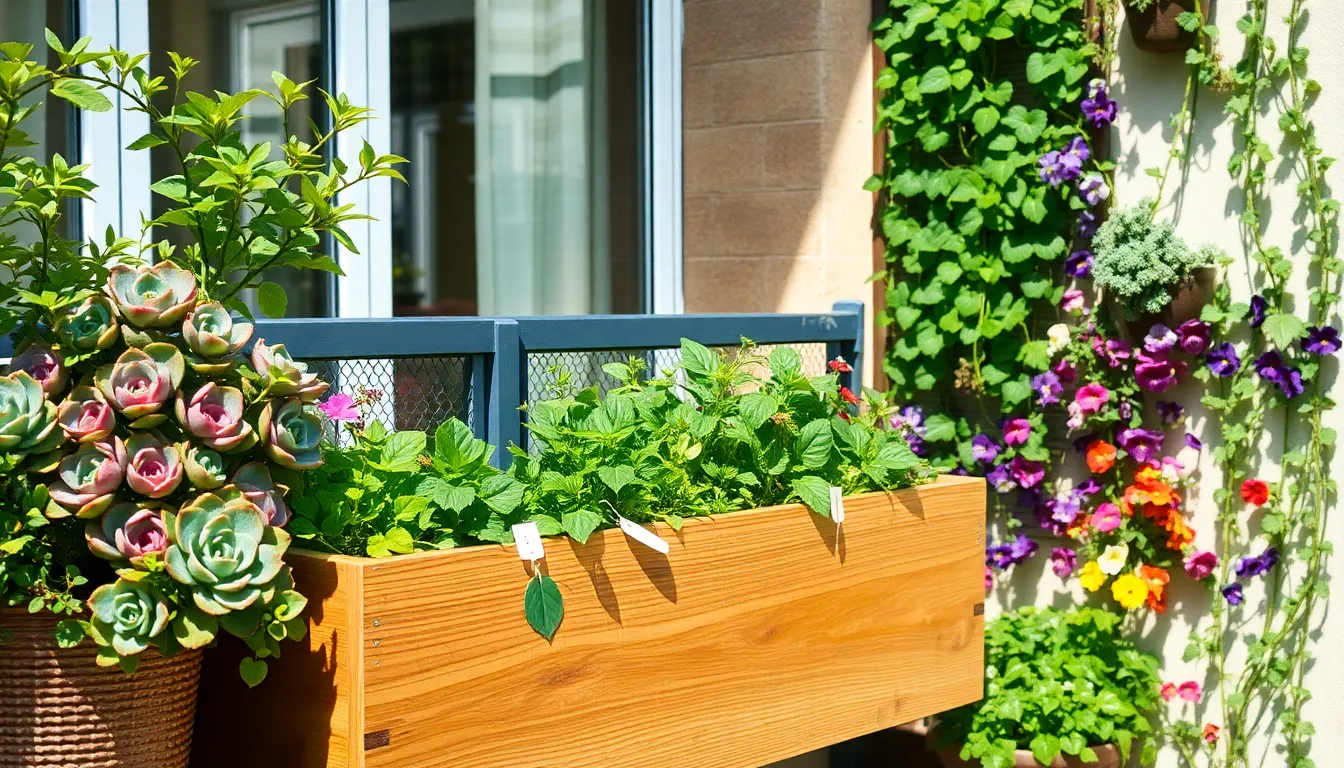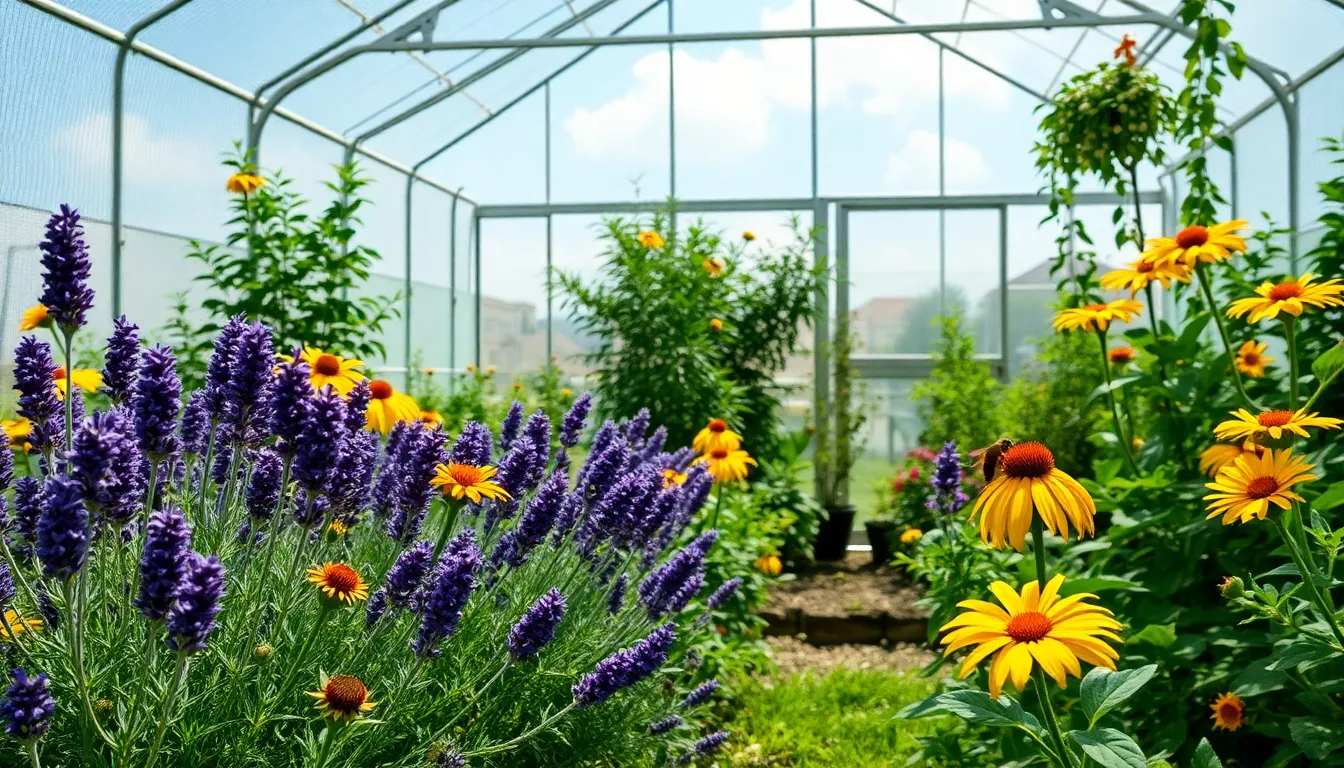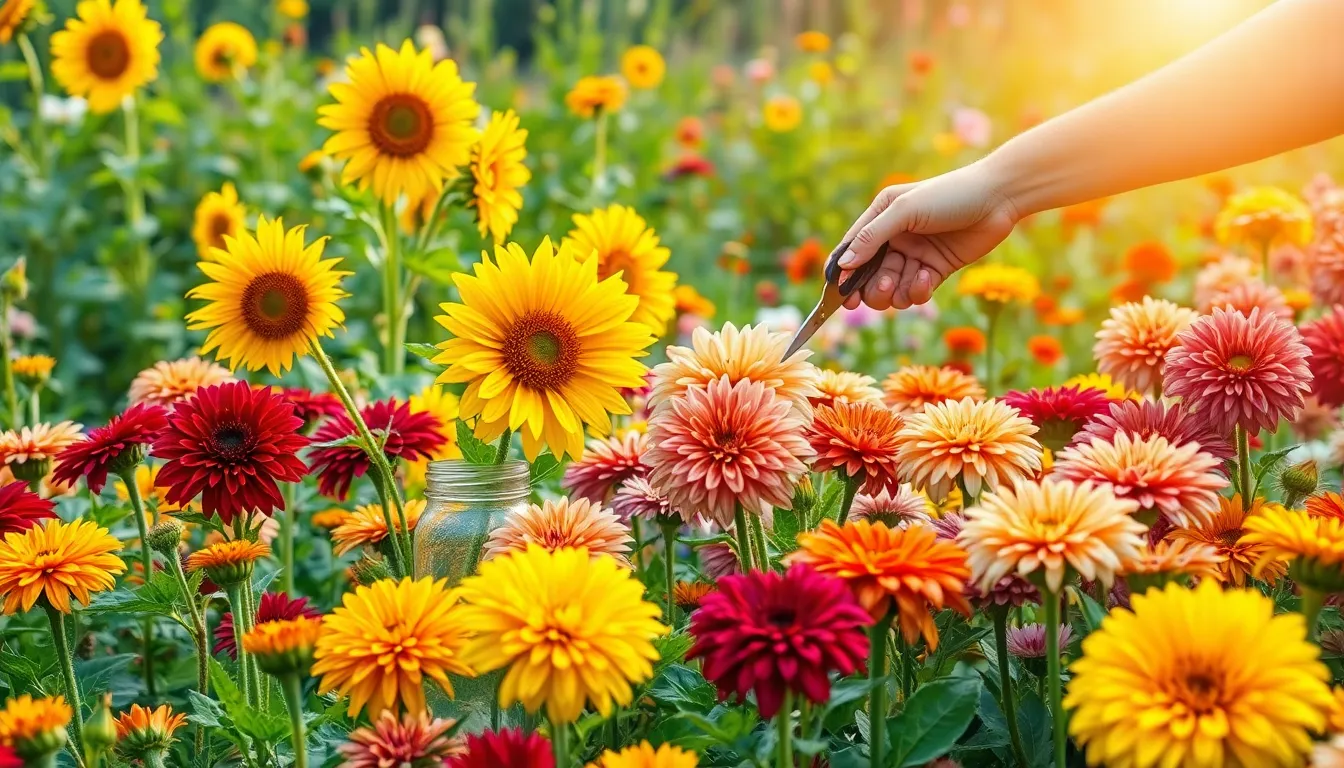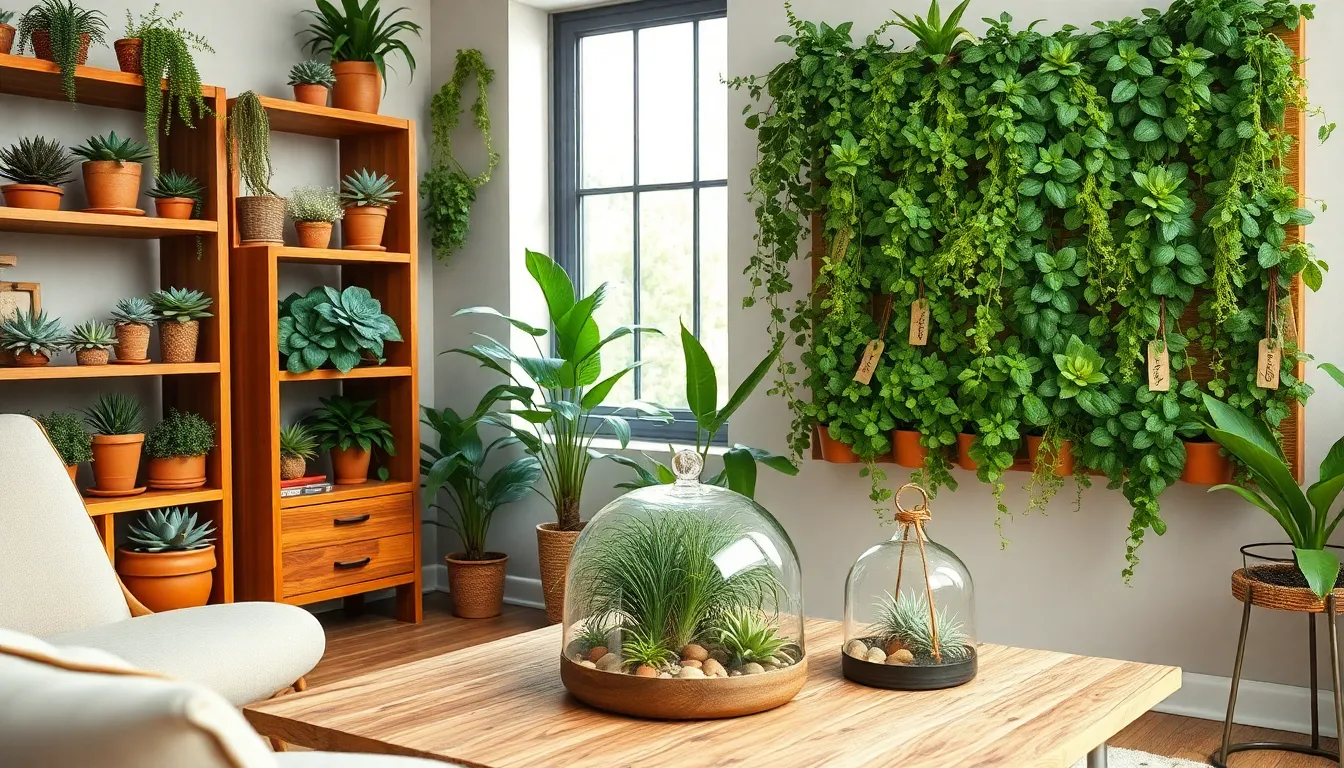Imagine stepping onto your apartment balcony and being greeted by a lush, thriving oasis that feels like your own little slice of paradise. Whether you’re a novice gardener just starting out or a seasoned green thumb looking to maximize your urban space, “Best Plants for Apartment Balcony Gardens” is your ticket to transforming even the smallest outdoor areas into vibrant, living masterpieces.
This guide is packed with carefully selected plant varieties that not only thrive in limited spaces but also bring beauty, freshness, and even a touch of nature’s tranquility to your doorstep. You’ll discover practical tips and techniques tailored to urban gardening, empowering you to cultivate a flourishing balcony garden that fits your lifestyle.
From hearty succulents to fragrant herbs, each plant on this list has been chosen for its ability to thrive in a city environment, providing you with the confidence to nurture your green space with success. Together, let’s embark on this gardening adventure that promises not just the joy of watching your plants grow, but also the satisfaction of creating a serene escape right outside your door.
Compact Herb Planters (Space-Saving Aromatics)

Compact herb planters are an excellent choice for space-saving aromatics on your apartment balcony. With the right approach, you can enjoy fresh herbs like basil, mint, and thyme even in limited spaces.
Consider using vertical planters or tiered setups to maximize your growing area. These solutions not only save space but also create a lush, green display that enhances your balcony’s aesthetic.
For optimal growth, choose a well-draining potting mix rich in organic matter. Herbs generally prefer soil that allows for good air circulation and does not retain excess moisture.
Ensure your herbs receive at least six hours of sunlight per day, which is crucial for their development and flavor. If your balcony is shaded, consider using grow lights to supplement natural sunlight, ensuring your herbs thrive.
Water your herbs when the top inch of soil feels dry, as overwatering can lead to root rot. For advanced gardeners, try a self-watering planter to maintain consistent moisture levels, benefiting both you and your plants.
Dwarf Citrus Trees (Fruitful Balcony Beauties)
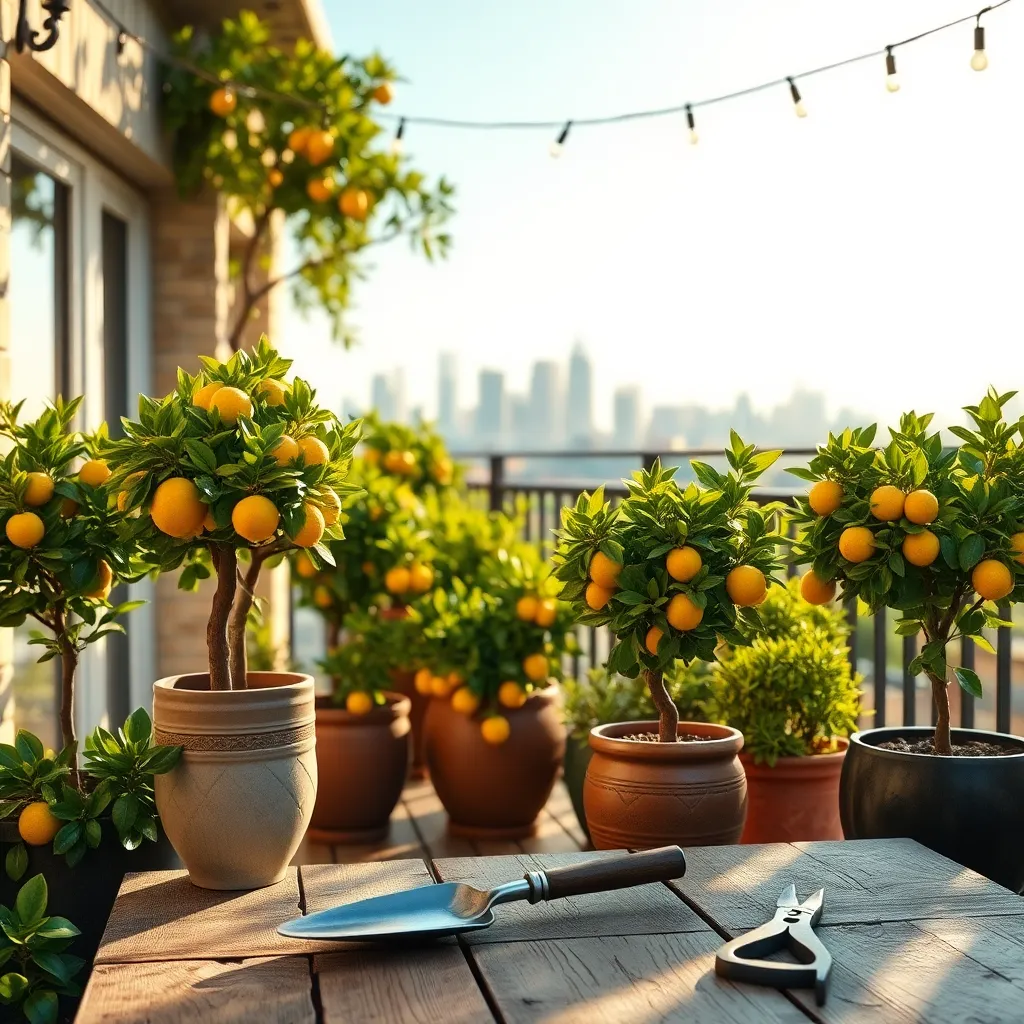
Dwarf citrus trees are an excellent choice for balcony gardens, offering both beauty and bounty in a compact form. These trees are perfectly suited for small spaces and can produce fruit as abundantly as their full-sized counterparts.
To thrive, dwarf citrus trees require a sunny spot with at least 6-8 hours of direct sunlight daily. Choose a container that is at least 18 inches in diameter to ensure adequate root space, and use well-draining potting soil to prevent root rot.
Regular watering is crucial, but be cautious not to overwater; allow the top inch of soil to dry out between waterings. Fertilize your tree every few months with a balanced citrus fertilizer to promote healthy growth and fruit production.
For those looking to refine their gardening skills, consider pruning your tree annually to maintain its shape and encourage more fruiting. Protect your tree from cold drafts and consider moving it indoors if temperatures drop below 50°F (10°C).
By following these tips, you can enjoy a lush, fruitful citrus tree that not only adds greenery to your balcony but also provides fresh fruit for your kitchen. Embrace the joy of growing your own citrus, and soon you’ll be reaping the rewards of your efforts.
Self-Watering Containers (Low-Maintenance Hydration)
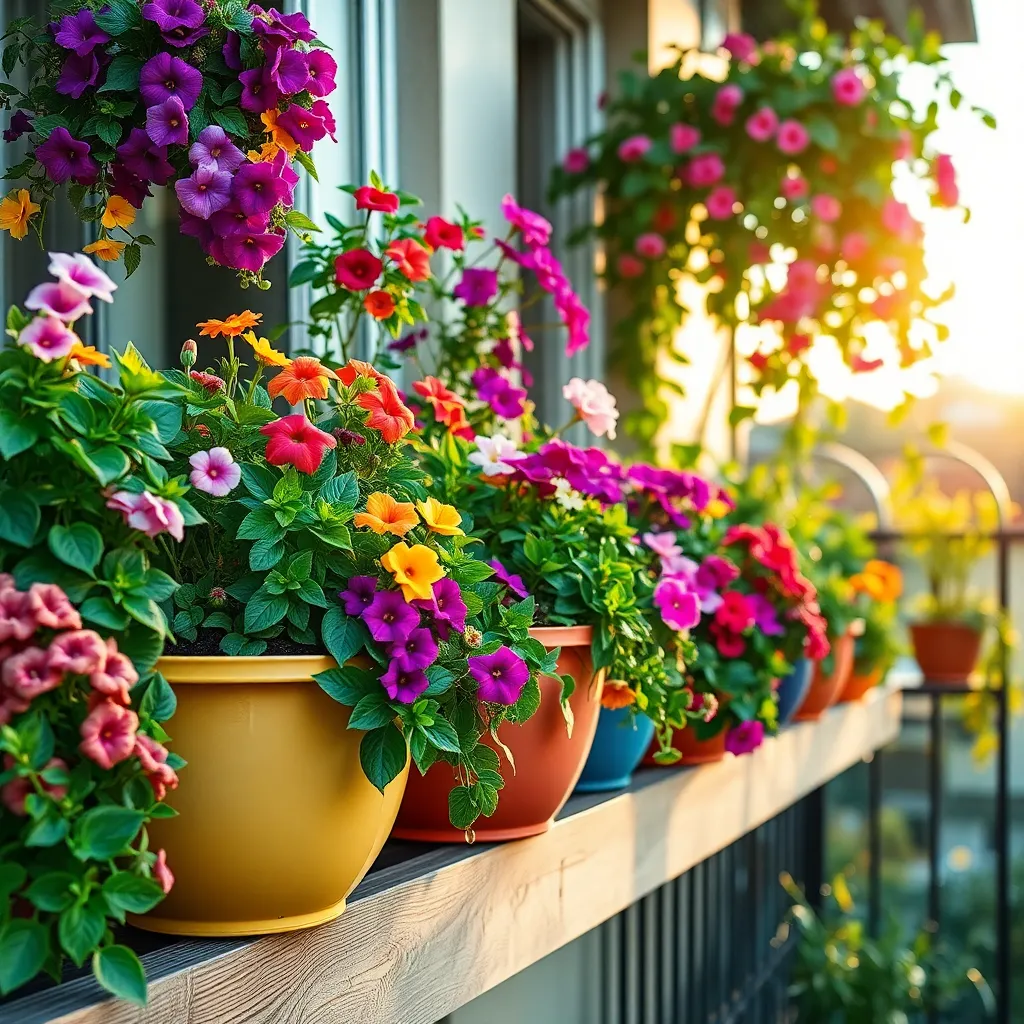
Self-watering containers are a game-changer for apartment balcony gardens, especially for those with busy schedules. These containers have a reservoir that provides water to the plants as needed, ensuring they stay hydrated without daily attention.
To use self-watering containers effectively, begin by selecting the right soil mix. A light, well-draining potting mix that contains perlite or vermiculite is ideal, as it allows the water to wick through the soil efficiently.
For beginners, starting with hardy plants like herbs or succulents can maximize the benefits of self-watering systems. These plants thrive with consistent moisture levels and are forgiving if you make minor mistakes in your watering routine.
Experienced gardeners can experiment with more demanding plants, like tomatoes or peppers, which benefit from consistent hydration. To optimize growth, ensure the reservoir is checked weekly to keep it filled, especially during hot summer months.
Climbing Vines (Vertical Greenery Expansion)
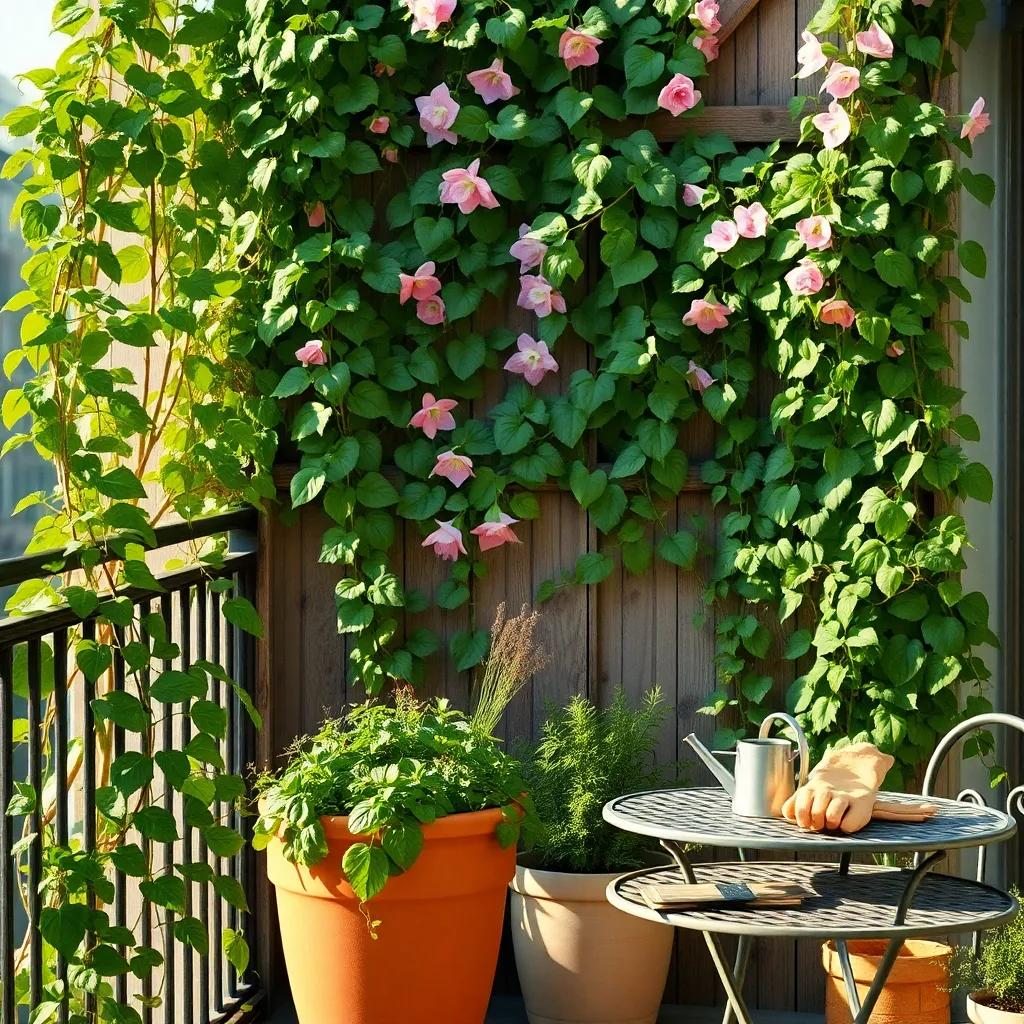
Adding climbing vines to your apartment balcony garden is a superb way to expand your greenery vertically. They not only provide lush coverage but also create a sense of privacy and a natural barrier against urban noise.
For beginners, easy-to-grow options include English ivy and morning glories, which thrive in a variety of lighting conditions. Ensure they receive adequate sunlight by positioning them where they can bask in at least 4-6 hours of direct or indirect light daily.
Climbing vines generally prefer well-draining soil, so consider using a mix of potting soil with added perlite or sand. Water these plants regularly but avoid overwatering; typically, watering once the top inch of soil feels dry is a good rule of thumb.
Advanced gardeners might experiment with more exotic varieties like passionflower or jasmine. These require a bit more attention, such as ensuring they have a sturdy trellis or support structure to climb, and periodically trimming to encourage bushy growth.
To optimize growth, feed your vines with a balanced liquid fertilizer every 4-6 weeks during the growing season. This will boost their vitality and ensure they remain healthy and vibrant throughout the year.
Shade-Tolerant Ferns (Lush Green in Low Light)
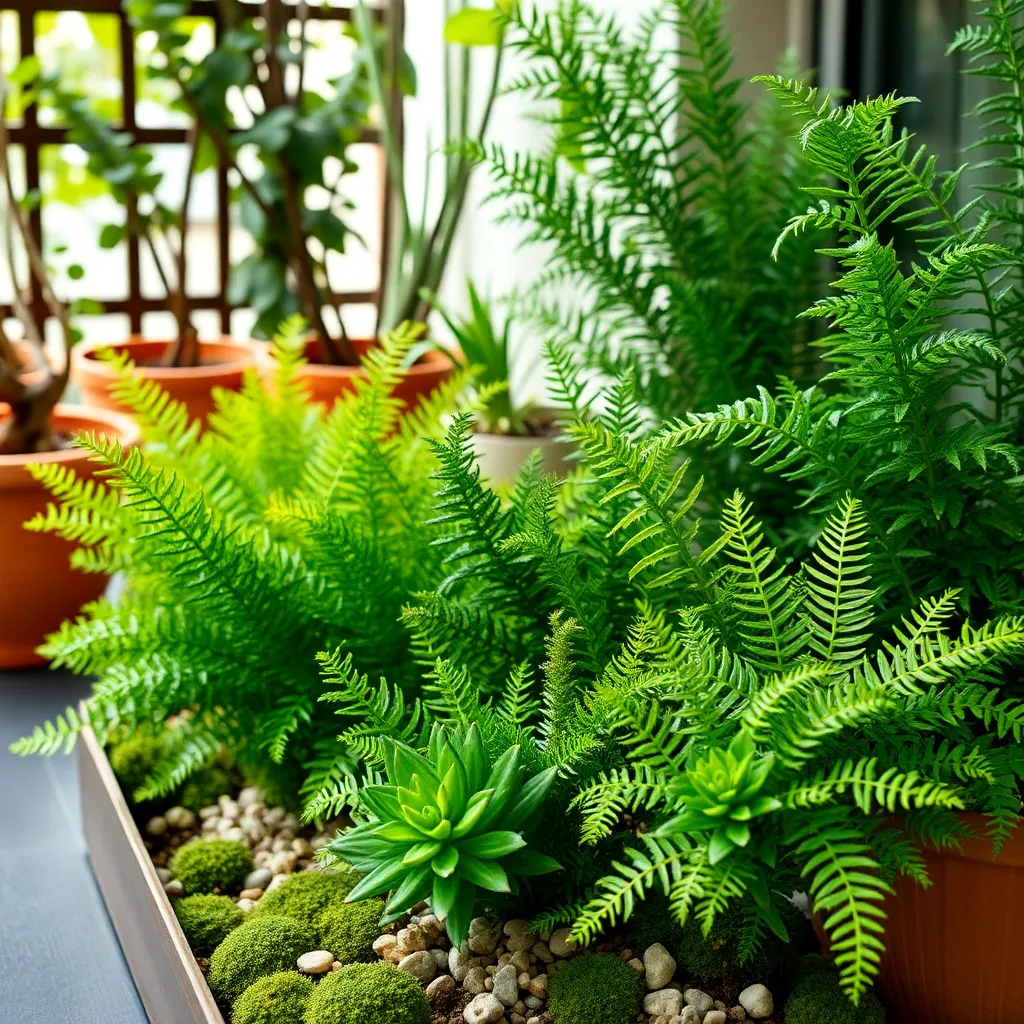
Ferns are a fantastic option for apartment balcony gardens, especially if your space is shaded or receives only indirect light. These shade-tolerant plants thrive in low-light conditions, making them perfect companions for urban gardeners with limited sunlight exposure.
When selecting ferns, consider varieties like the Boston Fern, Maidenhair Fern, or the Bird’s Nest Fern, all known for their lush foliage. These types of ferns are not only resilient but also add a touch of elegance to any balcony garden.
To ensure your ferns flourish, plant them in a well-draining potting mix rich in organic matter. A blend of peat moss, perlite, and pine bark works well, maintaining the moisture levels these plants crave without waterlogging their roots.
Water your ferns regularly, keeping the soil evenly moist but not soggy. Check the top inch of soil; if it feels dry, it’s time to water. Additionally, misting the leaves occasionally can help maintain the humidity levels ferns prefer.
For those seeking a bit of a challenge, try your hand at propagating ferns from spores. This advanced technique requires patience, but it can be a rewarding way to expand your fern collection. With attention to their needs, ferns can transform a shaded balcony into a verdant oasis.
Conclusion: Growing Success with These Plants
In the lush journey through “Best Plants for Apartment Balcony Gardens,” we’ve explored five key relationship concepts that not only apply to cultivating greenery but also to nurturing personal connections. Firstly, understanding compatibility is crucial—just as some plants thrive better together, so do people in relationships. Secondly, communication is key; ensuring your plants receive the correct amount of sunlight and water parallels the importance of clear communication in partnerships. Thirdly, patience is essential; both gardens and relationships require time to flourish. Fourthly, adaptability helps when unexpected changes occur, whether it’s a sudden weather shift or a life transition. Lastly, nurturing growth by providing consistent care mirrors the ongoing effort needed in relationships.
Now, take an immediate step—choose one plant to start your balcony garden today, symbolizing your commitment to growth. Bookmark this article to revisit these principles and apply them to both your gardening and personal relationships. As you embark on this green adventure, remember that successful relationships, like thriving gardens, are built on the foundation of care, patience, and a willingness to adapt and grow together. Save this guide as your go-to resource for nurturing vibrant connections.

